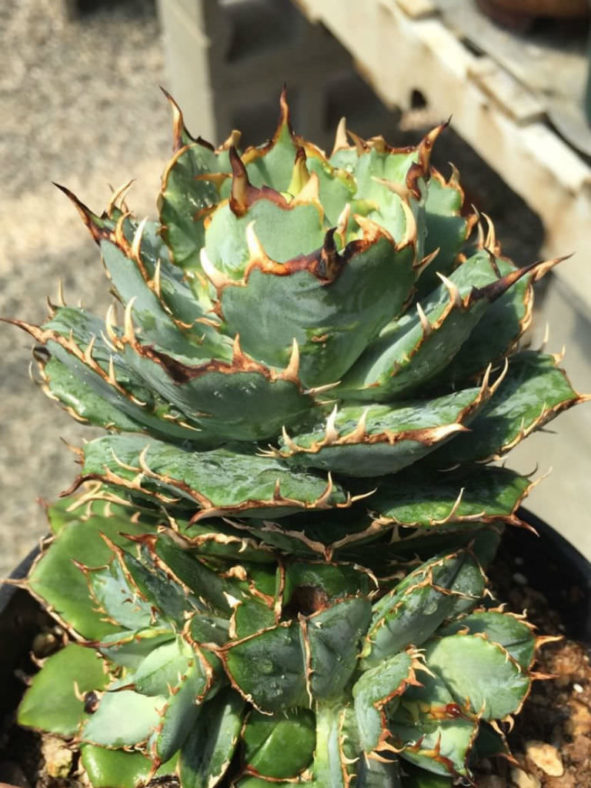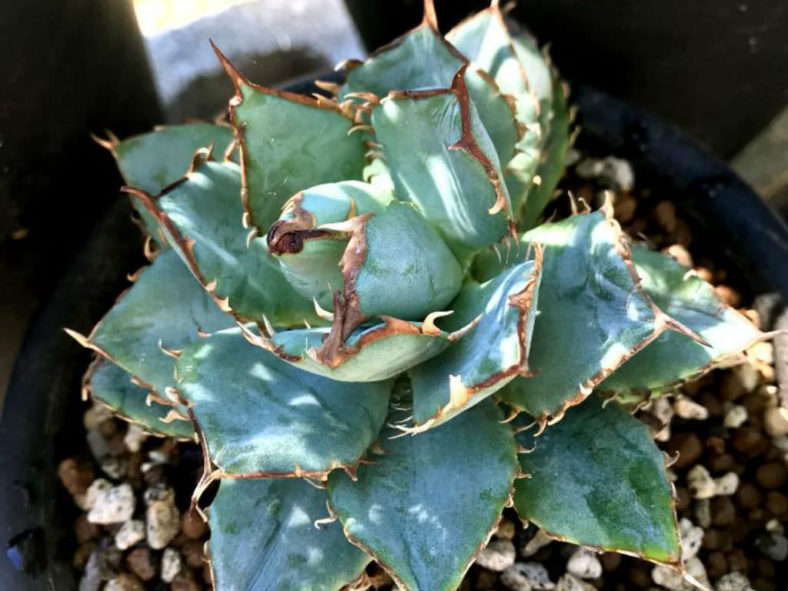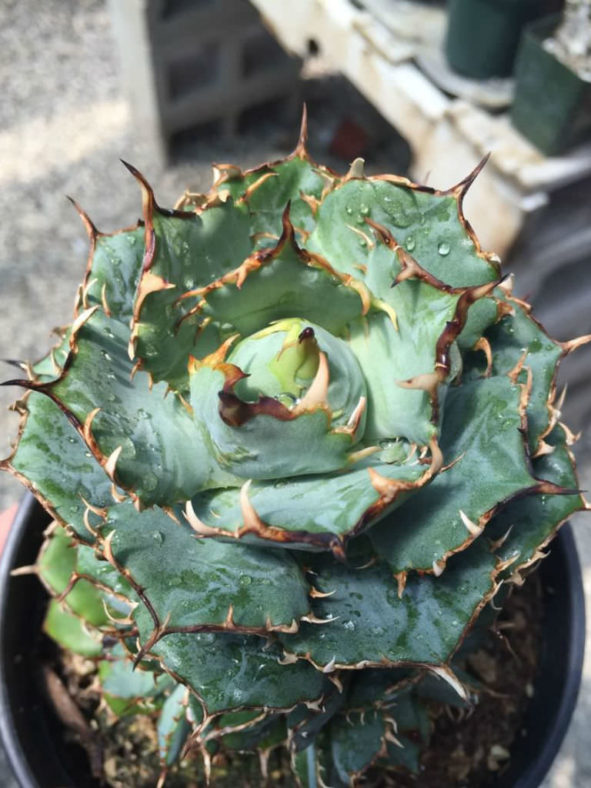Scientific Name
Agave 'Filigree'
Common Name(s)
Filigree Sierra Mixteca Agave
Synonym(s)
Agave titanota 'Filigree'
Scientific Classification
Family: Asparagaceae
Subfamily: Agavoideae
Genus: Agave
Origin
Agave 'Filigree' seems to have affinities with Agave titanota, which has very gray-colored leaves, but some speculate that it is a hybrid of Agave titanota or a form or hybrid of Agave horrida.
Description
Agave 'Filigree' is a striking succulent that forms rosettes of very short, broad, gray-green leaves with a reddish-brown terminal spine and narrow, recurved teeth along the margins. The rosettes slowly grow up to 2 feet (60 cm) tall and 3 feet (90 cm) in diameter. The marginal spines emerge golden yellow and age to a gray-white. The leaf margins themselves age to the same color as the spines, giving this plant a distinctive look.

Hardiness
USDA hardiness zone 9a to 11b: from 20 °F (−6.7 °C) to 50 °F (+10 °C).
How to Grow and Care
Agave is not a difficult plant to grow. They're slow-growing and dramatic and will even thrive on a bit of neglect. If you're the type of person who likes to fuss with houseplants and water, Agave is probably not the plant for you. If, however, you're the type of person who likes to set it and forget it, and you have a sunny window, Agave might be the way to go. Be aware that some large varieties will eventually outgrow your room (unless you have a large greenhouse), and Agave can be aggressive. They have irritating sap and sometimes very sharp thorns that can cause injuries to small children and even pets.
In general, Agave do not need to be repotted every year. Most species commonly found in cultivation grow slowly and take long to outgrow their pot. It's also best to handle your Agave as little as possible since they dislike being disturbed. When repotting, refresh the spent soil with a new potting mix and ensure the plant is firmly anchored in its pot.
See more at How to Grow and Care for Agave.
Links
- Back to genus Agave
- Succupedia: Browse succulents by Scientific Name, Common Name, Genus, Family, USDA Hardiness Zone, Origin, or cacti by Genus
Photo Gallery
Click on a photo to see a larger version.


